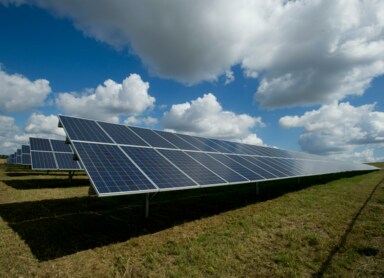What are the threats to the environment and what can we do about it? Overview
International organisations have been drawing attention to environmental risks for years. Unfortunately, in the pursuit of profit, companies are interfering more and more intensively and aggressively in the world around us. Can your company do something to combat environmental threats?
Threats to the environment - an analysis of the main problems
All species on Earth - including humans - function in one common ecosystem. However, as technology advances, humans are leaving an increasingly visible mark on the environment. WWF highlights six main categories of activities that make up the human footprint1:
- increasing carbon dioxide emissions;
- the taking up of more and more land for arable farming;
- the gradual expansion of grazing land, necessary to feed livestock;
- clearing of forests for timber used as raw material and fuel;
- exploitation of fisheries;
- occupation of land for development.
While it might seem that all these activities are necessary for communities to thrive, they need to be looked at comprehensively, including from the downside. Human activity causes deforestation of wooded areas, soil erosion, water pollution. It leads to far-reaching climate change and entails the extinction of animal and plant species, which disrupts the natural ecosystem in the long term.
If the above arguments sound unconvincing, let us take a look at what the concrete data say about this. The WWF's 2022 Living Planet Report shows that since 1970, wild vertebrate activity on Earth has declined by 69%. Over the same period, wildlife populations in Europe and Asia have declined by 18%, maintaining a steady and negative trend.
Impact of environmental risks on daily life and the economy
Many business owners find it difficult to identify with environmental risks. After all, people are doing well and the business is thriving, so what is the problem? Unfortunately, environmental risks also affect our daily lives.
Climate change is intensifying year on year. Droughts are becoming more frequent and the quality and quantity of agricultural crops are declining, which is felt by all consumers. Water resources, which are needed to power many appliances, including the cooling of power stations, are decreasing. Directly, this means a gradual increase in the price of energy from conventional sources and, in an extreme situation, even the risk of a blackout, i.e. a massive lack of access to electricity. This would mean huge losses for companies. The irrational management of natural resources such as coal and wood will gradually lead to their depletion.
Increasing environmental pollution is also a threat to ourselves. Among the direct health effects of smog and dust inhalation are:
- increased incidence of cancer
- more frequent respiratory diseases;
- increased risk of cardiovascular disease.
An example of a health risk is the ingestion of microplastics, which are produced by, for example, the degradation of fishing nets or plastic waste. It is eaten by animals and, in turn, by ourselves. It is estimated that each of us unknowingly eats around 5 grams of microplastic every week2. Reuters data is from 2019, so this amount is probably even higher now.
Solutions to environmental risks - individual and social action
Does being green and running a booming business have to be mutually exclusive? Of course not! What measures can a company that wants to reduce its emissions implement?
It is a good idea to start with small measures that do not require a significant financial outlay. In this way, it is easier to develop healthy habits and convince employees that the term "green company" is not just an empty slogan. What can you do to be more ECO?
- Replace lighting with energy-efficient LEDs;
- segregate waste;
- apply the 3Rs strategy, i.e. Reduce, Reuse, Recycle;
- educate employees to reduce water and electricity consumption;
- promote carpooling;
- use local suppliers of intermediate products to shorten the logistics chain and reduce the carbon footprint;
- use cost-effective electricity balancing.
Many companies are launching initiatives to subsidise environmental efforts. Did you know that the Humpter brand donates US$1 to the NGO One Tree Planted for every item sold?
An excellent solution to help support the environment would be to invest in Renewable Energy Sources. Photovoltaics allow you to use the sun's energy to produce electricity to power your company's grid. Heat pumps allow you to use the temperature difference to maintain thermal comfort indoors. If you use a company fleet, invest in electric cars and charging stations on company premises.
Is it expensive to implement RES technology? Certainly, the design and installation of an installation requires a considerable financial outlay. On the other hand, solutions such as photovoltaics or heat pumps pay for themselves after a few years. Companies also have the opportunity to benefit from various forms of subsidies, including:
- Energy Plus programme;
- Thermomodernisation bonus;
- White certificates issued by the Energy Regulatory Office;
- the My Electrician programme.
Environmental protection - importance and strategies
Environmental protection is becoming increasingly important as nature becomes more polluted. Of great interest is the philosophy of sustainable development and the associated provisions of the CSRD3. It requires many companies - including SMEs - to report on their performance improvement activities in four key areas - cross-cutting, environmental, social and corporate governance. Reporting on a cyclical basis to maintain transparency of the actions taken, including environmental performance.
The benefits of environmental activities are not only compliance and meeting regulatory requirements, but also economic and reputational benefits.
The company gains in the eyes of customers by showing itself to be a responsible enterprise that cares for the environment. The implementation of renewable energy technologies allows for a significant reduction in energy expenditure, thus lowering business costs. A corporation that applies green practices has the chance to become a member (or even leader) of an energy cluster, which means greater energy stability.
International environmental cooperation - perspectives and challenges
International environmental cooperation offers entirely new opportunities for caring for nature through action on a larger scale and with greater intensity. In practice, however, it can be difficult because of the need to negotiate mutually satisfactory agreements. At European Union level, it also requires the development of appropriately optimised rules that can be applied by all Member States. Such procedures are very time-consuming.
Remember that the environment will not wait for countries to develop appropriate policies. Apply small changes in your company and achieve tangible gains with them. If you don't know where to start, we can help you! REO.co.uk is a leading partner in the delivery of green solutions.
1. https://www.worldwildlife.org/threats/the-human-footprint [dostęp: 8.05.2024 r.]
2. https://www.reuters.com/graphics/ENVIRONMENT-PLASTIC/0100B4TF2MQ/index.html [dostęp: 8.05.2024 r.]
3. https://eur-lex.europa.eu/legal-content/PL/TXT/?uri=CELEX%3A32022L2464






